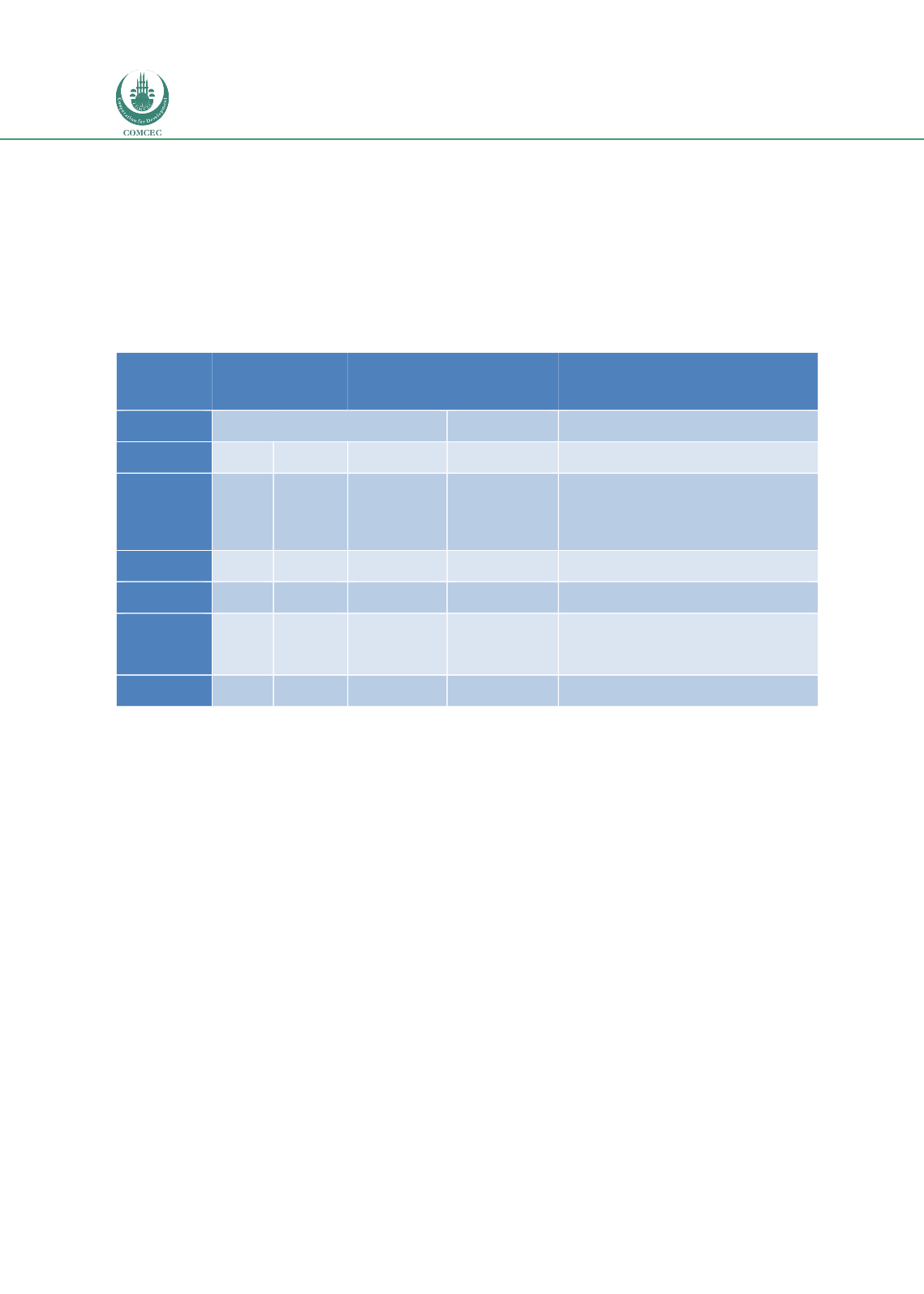

Reducing Postharvest Losses
In the OIC Member Countries
44
externalities, especially for pastoralists; market access issues for meat and meat products
reducing opportunities (e.g. absence of a disease free status in a particular geography); and,
the potential, but unmeasured role of food safety as a cause of down-stream costs as yet
unmeasured. This is summarised in
Table.The information is scant but suggests a wide
variation in losses from 0 to 28%. A variety of methods to estimate the losses were reported
from interviews, willingness to pay and general estimates. The causes of the losses was
generally not reported apart for Kenya where losses were not specifically attributed to any
part of the value chain.
Table 11: Summary of postharvest losses in livestock and meat
Country
Cattle Poultry Smallstock
Notes
(quality of
data)
Causes of loss
China
8-9.9%(1)
Estimate by
interview
Suggests highest losses in storage, but does
not specify causes
Jordan
-
5%(2)
-
Mortality only -
Guess
Dis-economies of scale
Turkey
-
5.9%(3)
1.5%(4)
(3) Economic
loss
(4) Guess – no
evidence
provided
High live-weight and mortality losses
during transport (4)
Ghana
28%
1.8%
0% (5)
Estimate by
interview
Transport inefficiency and underdeveloped
cold chain
Philippines
-
-
No data (5)
Estimate by
interview
Not reported
Kenya
-
3%(6)
-
Willingness to
pay method
Lack of market information, poor market
coordination and insufficient
infrastructure (e.g. roads, cold chain,
butchery equipment).
Range
28%
1.8 –
9.9%
0 – 1.5%
-
-
Sources: (1) Liu (2014), (2) Al-Sharafat et al (2013), (3) Aral et al (2014), (4) Tathdil et al (2013), (5) USSD
(2013), (6) Juma (2007).
2.2.6.
Milk and Dairy Products
Introduction
There is a range of surveys and literature reviews which have covered postharvest losses in
the milk and dairy value chains in different countries. Whilst the main causes and
consequences of the losses appear to be well understood, the figures relating to the extent of
the losses seem to be relatively fragmented. The latter is likely to be due to several reasons,
including difficulties to measure postharvest losses (in particular if resources are limited), and
the fact that in a few countries in-depth postharvest loss surveys have been undertaken, whilst
in others there have been only limited or no such surveys. As a consequence, postharvest loss
figures in the milk and dairy value chain are only available for some countries.
The following section provides:
some key facts of the milk and dairy value chain in OIC countries;
an overview of postharvest loss figures found in the literature for the milk and dairy
value chain in selected countries;
the causes and consequences of postharvest losses in the milk and dairy value chain;
suggestions and recommendations on how to improve the situation.
















